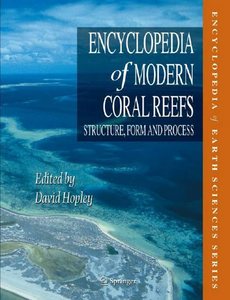Bioturbation
Wust, Raphael A.J. (2011) Bioturbation. In: Hopley, David, (ed.) Encyclopedia of Modern Coral Reefs: structure, form and process. Encyclopedia of Earth Science . Springer, Dordrecht, The Netherlands, pp. 158-163.
![[img]](https://researchonline.jcu.edu.au/19071/1.hassmallThumbnailVersion/19071_Wust_2011_Book_Cover.jpg)
|
Image (JPEG) (Book Cover)
- Cover Image
Download (95kB) |
|
|
PDF (Published Version)
- Published Version
Restricted to Repository staff only |
Abstract
Definition and introduction
Bioturbation refers to particle mixing within unconsolidated sediments through the activities of biological organisms, most commonly at, or close to, the water-sediment interface. The implications of this process go far beyond simply mixing the substrate as sediment particle preservation, food availability, and geochemical composition within the substrate are all affected. Bioturbation activity can also increase the size of the effective sediment-water interface contributing to enhanced chemical fluxes between the sediment and the water column. Some organisms enhance chemical exchange by flushing their burrows with the overlying waters, a process termed bioirrigation (Aller, 1977). Others, mainly macroinfauna (e.g., annelid worms – polychaetes), feed at depth and eject particles at the sediment-water interface ("conveyor-belt feeders"; Rhoads, 1974). The effective or total bioturbation in reefal environments largely depends on the kinds of organisms present as feeding mode, frequency, and behavior dictate the type of the sediment mixing. The process of bioturbation is regarded as part of early diagenesis as it contributes to altered physical and chemical sediment nature and structure (e.g., Soetaert et al., 1996). Hence, bioturbation affects sediment biogeochemistry, including organic matter mineralization, oxygen, nutrient, and sulfur cycling as well as oxic and anoxic mineralization (e.g., shell dissolution, Fe and Mn reduction). Therefore, the following discourse discusses some of the most important aspects of bioturbation in reefal environments including the effects of bioturbation on (1) sediment sorting, (2) depth of mixing, (3) timeaveraging and preservation potential (i.e., shell age, shell loss, including corrosion and dissolution), and (4) geochemical composition and the oxygen/redox potential within the uppermost sediment layer.
| Item ID: | 19071 |
|---|---|
| Item Type: | Book Chapter (Research - B1) |
| ISBN: | 978-90-481-2639-2 |
| Date Deposited: | 21 Feb 2012 00:54 |
| FoR Codes: | 04 EARTH SCIENCES > 0406 Physical Geography and Environmental Geoscience > 040601 Geomorphology and Regolith and Landscape Evolution @ 100% |
| SEO Codes: | 97 EXPANDING KNOWLEDGE > 970104 Expanding Knowledge in the Earth Sciences @ 100% |
| Downloads: |
Total: 213 Last 12 Months: 3 |
| More Statistics |



